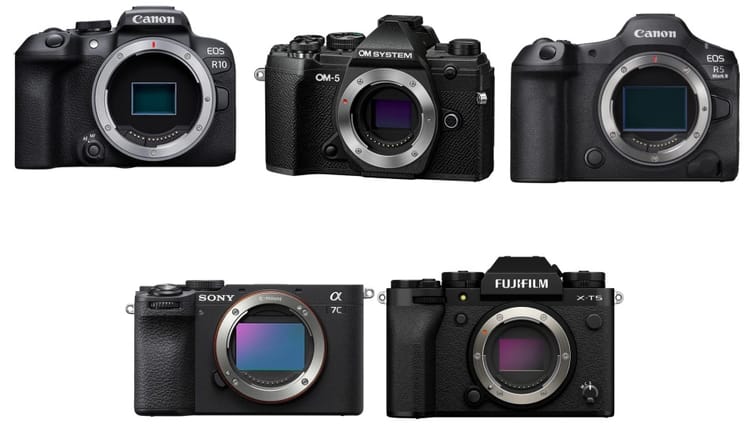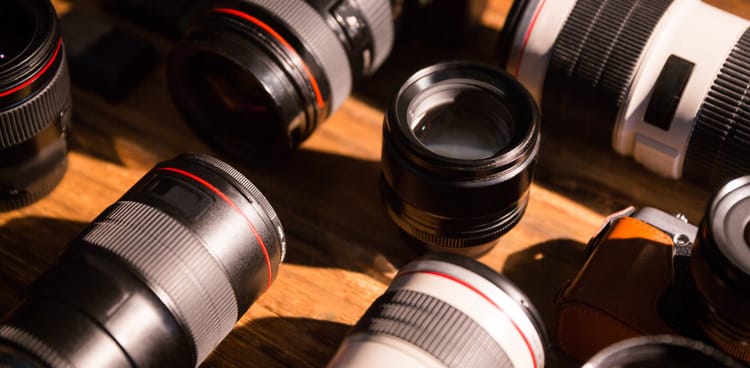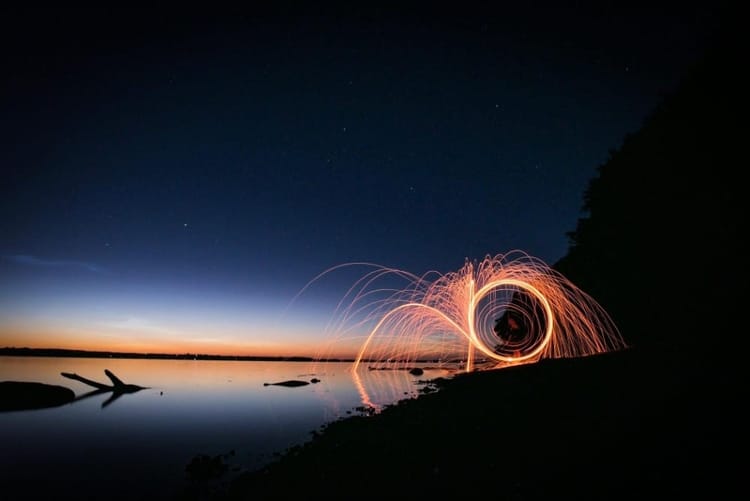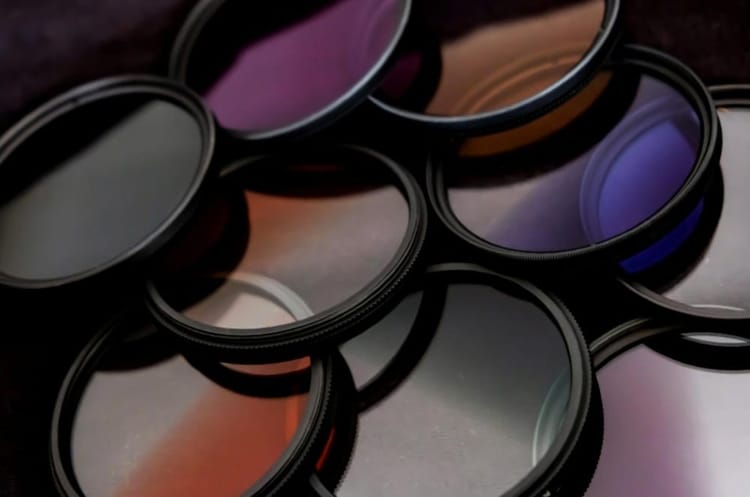BEST CAMERAS FOR STREET PHOTOGRAPHY

Introduction
What is Street Photography?
Street photography is an art form that captures the candid, raw, and unfiltered moments of everyday life. It often focuses on human subjects, interactions, and the urban environment, offering glimpses into the soul of a city. Unlike other forms of photography that may be staged or planned, street photography thrives on spontaneity, fleeting moments, and the unpredictability of life. The goal is to capture scenes as they unfold naturally, whether they involve people, architecture, or other elements of the urban landscape.
Street photographers work in various environments, from bustling city streets to quiet suburban corners, but all share a commitment to capturing authentic and often emotive scenes.
Why the Right Camera Matters in Street Photography
Street photography is a genre that often requires speed, discretion, and adaptability. Unlike studio or landscape photography, where you have the luxury of setting up your shot, street photography is all about seizing moments as they happen. Therefore, your camera plays a critical role in how effectively you can capture those moments.
- Portability: Street photographers are usually on the move, so having a camera that is light, compact, and easy to carry is essential. Lugging around a large DSLR with heavy lenses might not only slow you down but can also draw unnecessary attention.
- Discretion: Being discreet is crucial to street photography because it helps you blend into the environment, allowing you to capture candid shots without disturbing your subjects. A smaller, quieter camera is far less intrusive than a large camera with a loud shutter sound.
- Speed: The streets are dynamic, with scenes evolving in seconds. A camera with fast autofocus and minimal lag is essential for catching those decisive moments. You don’t have time to fumble with settings or wait for focus – the moment will be gone.
- Low-Light Performance: Many street photographers work in varied lighting conditions, from bright sunny days to dimly lit alleyways or during the evening. A camera that can handle low light, without producing too much noise, can make a significant difference in the quality of your images.
- Silent Shooting: Some of the best street shots come from being unnoticed. A camera with a silent or electronic shutter option allows you to shoot without drawing attention, letting you capture genuine moments in time.
Criteria for Choosing a Street Photography Camera
When narrowing down the best cameras for street photography, certain features stand out that can make or break a camera’s performance in this genre. Here are the primary factors considered in our selection:
- Compact Size: Cameras that are lightweight and easy to carry are ideal for street photographers who need to be agile and discreet.
- Fast Autofocus: The ability to lock focus quickly and accurately is crucial when subjects are moving unpredictably.
- Excellent Image Quality: Whether using an APS-C sensor, Micro Four Thirds, or full-frame, image quality remains an important factor, especially when you want to maintain detail in diverse lighting conditions.
- Lens Versatility: A camera with a fixed prime lens can offer simplicity and sharpness, while interchangeable-lens systems provide more flexibility to adapt to different situations.
- Durability and Weather Sealing: Street photography often exposes you to various elements, from rain to dust. Having a camera that is weather-sealed or built to last ensures you can keep shooting, no matter the conditions.
- Price and Value: Cameras come in all price ranges, and while professional photographers might opt for premium gear, this guide will offer options for enthusiasts on a budget as well.
1. Fujifilm X100V
Why It’s Great for Street Photography
The Fujifilm X100V is often hailed as one of the best cameras for street photography due to its compact size, retro design, and impressive features that blend both form and function. The camera comes with a fixed 23mm f/2 lens, equivalent to 35mm in full-frame terms, which is widely regarded as one of the best focal lengths for street photography. This focal length provides enough context in the frame without distorting the scene, making it ideal for capturing candid moments on the streets. The X100V's leaf shutter allows for near-silent operation, perfect for being discreet in public spaces.
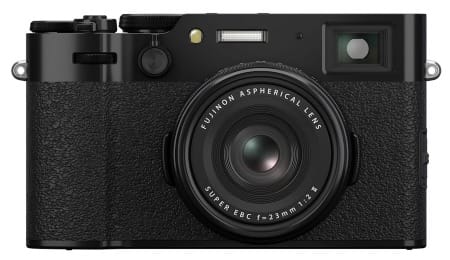
It also sports a hybrid viewfinder, offering both optical and electronic options. This feature makes the X100V feel like a classic rangefinder, allowing you to switch between seeing the world through an optical viewfinder (great for awareness of what’s outside the frame) or an electronic viewfinder (for precise exposure control).
The X100V’s lightweight and portability make it easy to carry around all day, and its sturdy build means it’s durable enough for any street photography scenario, including less-than-ideal weather conditions, as it’s weather-sealed (when used with a filter on the lens). This balance of style, performance, and size makes the X100V a favorite among street photographers who value aesthetics and practicality.
Key Features
- APS-C X-Trans CMOS 4 Sensor: The X100V features Fujifilm’s renowned 26.1MP APS-C X-Trans sensor, providing excellent image quality with vibrant colors, sharp details, and great dynamic range. This sensor also excels in low-light scenarios, which is crucial for street photography at night or in poorly lit areas.
- Fixed 23mm f/2 Lens: The built-in lens is sharp, fast, and versatile, giving you that classic 35mm full-frame equivalent focal length that many street photographers love. The f/2 aperture provides a great balance of depth of field and low-light performance, allowing you to isolate subjects while still capturing enough of the background for environmental context.
- Hybrid Viewfinder (Optical & Electronic): One of the standout features of the X100V is its hybrid viewfinder. You can choose between the optical viewfinder (OVF) for a more traditional shooting experience or the electronic viewfinder (EVF) for a digital preview of your exposure and framing. This flexibility is rare and beloved by photographers who enjoy the tactile experience of street shooting.
- Weather Sealing: The X100V comes with weather sealing, making it more durable in harsh outdoor conditions. This is especially important for street photographers who often shoot in unpredictable weather.
- Silent Shutter: With an electronic shutter option, the X100V can shoot silently, allowing you to capture moments without drawing attention to yourself. This is especially useful in situations where you want to remain as unobtrusive as possible.
- 4K Video Capabilities: While primarily known for its still photography prowess, the X100V can shoot 4K video, which may appeal to street photographers who also like to capture video footage of the urban environment.
- Film Simulations: Fujifilm's excellent film simulations are another reason this camera stands out. Street photographers often appreciate the nostalgic look of classic film stocks, and Fujifilm’s simulations allow you to replicate those aesthetics without post-processing. Some popular simulations include Classic Chrome, Acros (for black and white), and Provia.
Pros & Cons
- Pros:
- Compact and Lightweight: Easy to carry, ideal for all-day shoots.
- Hybrid Viewfinder: Offers both OVF and EVF, giving you flexibility in how you compose shots.
- Excellent Image Quality: The APS-C X-Trans sensor delivers stunning sharpness and color accuracy.
- Weather-Sealed Body: With an optional filter, it becomes fully weather-sealed.
- Silent Shooting: Essential for unobtrusive street photography.
- Film Simulations: Perfect for street photographers who love the look of classic film without the need for heavy editing.
- Cons:
- Fixed Lens: While the 23mm lens is versatile for street photography, it can be limiting if you prefer zoom or wider focal lengths.
- Price: The X100V is not the cheapest option, though its feature set justifies the price for most.
- No IBIS: Lack of in-body image stabilization can be a drawback for handheld shooting in low-light scenarios, although the fast lens compensates to some extent.
2. Ricoh GR III
Why It’s Great for Street Photography
The Ricoh GR III has become a cult favorite among street photographers due to its exceptional combination of portability, high image quality, and minimalist design. The GR III is ultra-compact, lightweight, and truly pocketable, making it one of the most discreet cameras you can carry for street photography. Its size allows it to slip into any pocket, meaning you can have it with you at all times—perfect for capturing those spontaneous, fleeting street moments.
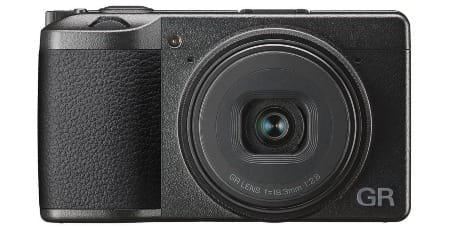
A key feature of the GR III is its 28mm fixed lens (equivalent to full-frame), which many street photographers appreciate for its wide-angle perspective that includes more of the environment in the shot without significant distortion. The f/2.8 aperture allows you to shoot in low light, and the sharpness of the lens ensures that you capture fine details even at this wide focal length.
The Ricoh GR III is also known for its fast autofocus and snap focus mode, which allows you to preset a focus distance and shoot instantly without having to wait for autofocus. This feature is particularly useful in street photography, where fast reactions are crucial. With its minimalist design, silent operation, and no-nonsense user interface, the GR III lets you focus on the moment without distraction.
Key Features
- 24MP APS-C Sensor: Despite its tiny size, the GR III packs a powerful 24.2MP APS-C sensor, which delivers outstanding image quality on par with many larger cameras. The sensor is capable of producing images with excellent dynamic range, high resolution, and minimal noise, even in low-light conditions, making it ideal for street shooting in varying lighting environments.
- Fixed 28mm f/2.8 Lens: The built-in 28mm lens (full-frame equivalent) offers a slightly wider field of view than the typical 35mm focal length, allowing you to capture more of the scene around you. It’s perfect for street photography as it includes enough context without overwhelming the main subject. The f/2.8 aperture is not the widest available, but it strikes a good balance between size and performance, delivering sharp, detailed images.
- Snap Focus Mode: One of the standout features of the Ricoh GR III is its Snap Focus mode, which allows you to set a predetermined focus distance (e.g., 1m, 1.5m, 2m, etc.). This is a lifesaver in fast-moving street scenes, where you don’t have time to wait for autofocus to lock onto your subject. With Snap Focus, you can shoot instantly and confidently, knowing the camera is pre-focused at your desired distance.
- In-Body Image Stabilization (IBIS): The GR III features a 3-axis image stabilization system that helps reduce camera shake when shooting handheld, especially in low-light environments. This feature is especially valuable for street photographers who often shoot on the go, where stabilizing the camera manually can be difficult.
- Compact and Lightweight Design: Weighing just 257 grams (0.57 pounds), the GR III is small and discreet, making it ideal for street photographers who want to blend into the background. Its understated appearance means you can take candid shots without drawing attention to yourself or the camera.
- Touchscreen Controls: The rear LCD is a 3-inch touchscreen that simplifies controls and navigation. You can easily set focus points or adjust settings with a tap, which helps speed up the shooting process—especially when you're capturing fast-moving street scenes.
- Built-In ND Filter: The Ricoh GR III comes with a built-in neutral density (ND) filter, which reduces the amount of light entering the lens. This is particularly useful in bright conditions when you want to use wider apertures or slow shutter speeds to achieve creative effects, such as motion blur.
- Silent Operation: Like many cameras designed for street photography, the GR III offers a completely silent shutter option, allowing you to shoot unnoticed. This feature is especially valuable when you need to capture candid moments without disturbing the scene or alerting your subjects.
Pros & Cons
- Pros:
- Ultra-Portable: Truly pocket-sized, making it the ideal "always-carry" camera.
- High-Quality APS-C Sensor: Delivers exceptional image quality despite the camera’s small size.
- Snap Focus Mode: Allows fast, intuitive shooting without the need to wait for autofocus, perfect for capturing split-second street moments.
- Discreet Design: The understated, simple design allows you to shoot candidly without drawing attention to yourself.
- Image Stabilization: 3-axis IBIS helps reduce motion blur in low-light or handheld shots.
- Built-In ND Filter: Handy for controlling exposure in bright conditions or for creative shooting techniques.
- Touchscreen Interface: Simplifies controls and makes shooting fast and intuitive.
- Cons:
- Fixed Lens: The 28mm focal length is not for everyone. Some photographers may prefer a longer focal length or zoom versatility.
- No Built-In Viewfinder: The GR III lacks an electronic or optical viewfinder, which may be a drawback for photographers who prefer to compose their shots using a viewfinder rather than the rear screen.
- No 4K Video: While primarily focused on still photography, the GR III's video capabilities are somewhat limited, offering only Full HD video recording, which might not appeal to videographers.
- Short Battery Life: The GR III’s compact size results in a smaller battery, which translates to relatively short battery life compared to other cameras in this segment.
3. Sony A7C
Why It’s Great for Street Photography
The Sony A7C is an excellent option for street photographers who want the image quality and versatility of a full-frame camera in a compact and lightweight body. It’s designed to be portable yet powerful, making it perfect for street photography, where both discretion and high performance are key. Despite its small size, the A7C houses a 24.2MP full-frame sensor, providing exceptional image quality with great dynamic range, high detail, and excellent low-light performance—key for capturing street scenes in various lighting conditions.
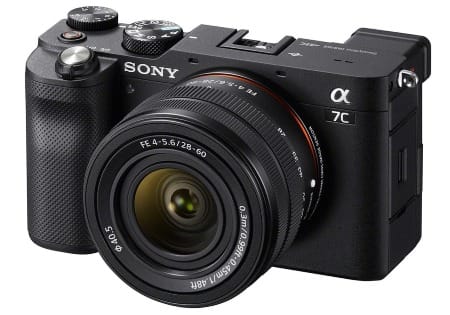
The A7C’s autofocus system is another standout feature. It uses Sony’s advanced Real-time Tracking and Real-time Eye AF (for both humans and animals), ensuring that you never miss focus, even with fast-moving subjects—a crucial feature for street photographers who often shoot in dynamic, unpredictable environments. The compact rangefinder-style body, combined with an electronic viewfinder and a fully articulating touchscreen, makes it versatile and easy to use in different shooting situations.
Its silent shooting mode, in-body image stabilization (IBIS), and the ability to use a wide range of interchangeable lenses from the Sony E-mount ecosystem make it an ideal camera for street photographers who want to balance image quality, portability, and flexibility.
Key Features
- 24.2MP Full-Frame Sensor: The A7C’s full-frame sensor delivers superior image quality compared to APS-C or Micro Four Thirds cameras, giving you better dynamic range, low-light performance, and the ability to achieve shallow depth of field for subject isolation. This is especially useful for street photography, where light conditions can change rapidly, and you may want to blur out busy backgrounds to emphasize your subject.
- Compact and Lightweight Design: Despite being a full-frame camera, the A7C is extremely compact and lightweight, weighing only 509 grams (1.12 lbs), making it one of the smallest and lightest full-frame interchangeable lens cameras available. Its size makes it a fantastic choice for street photographers who want to stay inconspicuous while still having the power of a full-frame camera at their fingertips.
- Advanced Autofocus with Real-Time Tracking: Sony’s autofocus system is one of the best in the industry, and the A7C benefits from the same Real-time Tracking and Real-time Eye AF technology found in Sony’s higher-end models. This allows the camera to quickly and accurately lock focus on moving subjects—an invaluable feature for street photography, where subjects often move unpredictably.
- In-Body Image Stabilization (IBIS): The A7C features 5-axis in-body image stabilization, which helps reduce motion blur from camera shake, especially when shooting in low-light conditions or using slower shutter speeds. This is particularly useful for street photographers who shoot handheld, often in environments where a tripod isn’t practical.
- Silent Shutter Mode: The A7C offers a silent electronic shutter mode, allowing you to capture candid street moments without drawing attention to yourself. Silent shooting is invaluable when you want to remain unnoticed, especially in quieter environments or when photographing sensitive situations.
- Fully Articulating Touchscreen: The 3.0-inch fully articulating touchscreen makes it easy to shoot from unconventional angles, such as waist-level or high-angle shots. This is particularly useful for street photography, where flexibility in composition can help you capture unique perspectives without having to physically move yourself into awkward positions.
- 4K Video Capabilities: The Sony A7C also excels in video, with the ability to record 4K video at 30fps. This feature makes it a solid option for street photographers who like to mix stills and video or capture cinematic urban scenes. The camera’s excellent autofocus system also carries over into video, making it easy to track moving subjects.
- Interchangeable Lenses: As part of Sony’s E-mount system, the A7C is compatible with a wide range of lenses. You can use compact primes for stealthy shooting or wide-angle lenses for more environmental shots. The versatility of interchangeable lenses allows you to adapt to various street photography styles, whether you prefer tight portraits or wide urban landscapes.
Pros & Cons
- Pros:
- Compact Full-Frame Design: Offers the image quality of a full-frame sensor in one of the smallest and lightest bodies available, perfect for carrying around all day.
- Excellent Autofocus: Real-time Tracking and Eye AF ensure sharp focus, even in fast-moving or dynamic scenes.
- 5-Axis IBIS: Provides stabilization, which helps in low-light conditions or when shooting handheld at slower shutter speeds.
- Silent Shooting: The silent shutter mode allows for discreet, candid photography.
- Fully Articulating Touchscreen: Offers flexibility for shooting from different angles, improving your ability to capture unique perspectives.
- Interchangeable Lens System: Compatibility with a wide range of Sony E-mount lenses gives you the flexibility to choose the right focal length for your style.
- 4K Video: High-quality video recording capabilities make it a versatile choice for street photographers who also want to capture video footage.
- Cons:
- Small EVF: The electronic viewfinder (EVF) is smaller than those found on some other cameras, which might be less comfortable for extended use.
- Limited Customization Options: While the A7C is highly functional, some users might find the customization options more limited compared to other Sony models like the A7R series.
- No Built-In Flash: The A7C does not include a built-in flash, which could be a limitation in low-light situations without external lighting.
- Price: The A7C is on the higher end of the price range for street photography cameras, though it provides full-frame quality and advanced features to justify the investment.
4. Leica Q2
Why It’s Great for Street Photography
The Leica Q2 is a dream camera for street photographers who value simplicity, speed, and unparalleled image quality that comes with a full-frame sensor and a superb fixed prime lens. Leica has a long-standing reputation in street photography, dating back to the days when Henri Cartier-Bresson used a Leica rangefinder to capture some of the most iconic images in photographic history. The Q2 continues that legacy with a perfect blend of classic design and modern technology, all housed in a premium, robust body.
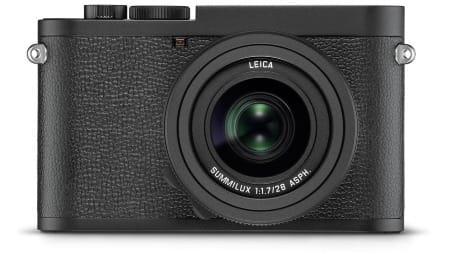
One of the standout features of the Leica Q2 is its 47.3MP full-frame sensor, which delivers incredibly detailed and sharp images, even when cropping. Paired with the Summilux 28mm f/1.7 lens, the Q2 offers fantastic low-light performance, a versatile wide-angle field of view, and beautiful background separation thanks to the wide aperture. For street photographers, this is the perfect focal length for capturing both candid close-ups and environmental shots, giving you the flexibility to shoot without switching lenses.
The Q2 is also equipped with weather sealing, making it durable enough to handle various street conditions, whether you’re shooting in rain, dust, or other harsh environments. It’s a no-fuss, all-in-one camera that excels at discreet, fast-paced shooting, allowing you to focus on capturing the moment without worrying about settings or equipment changes.
Key Features
- 47.3MP Full-Frame Sensor: The Q2 boasts an outstanding 47.3-megapixel full-frame sensor, which produces incredibly sharp, high-resolution images. This level of resolution not only delivers exceptional detail, but it also allows you to crop your images without sacrificing quality. For street photographers, this means you can capture wide scenes and still crop into details during post-processing without losing image fidelity.
- Fixed 28mm f/1.7 Summilux Lens: The Q2 comes with a legendary Leica Summilux 28mm f/1.7 lens, which is ideal for street photography. The 28mm focal length is wide enough to capture context in your shots while still being versatile for close-up subjects. The wide f/1.7 aperture allows for excellent low-light performance and beautiful bokeh, making it easy to isolate subjects from their background. This fixed-lens approach also simplifies the shooting process, forcing photographers to focus on composition and creativity rather than switching lenses.
- Weather Sealing: Street photography can be unpredictable, with weather conditions sometimes less than ideal. The Leica Q2 is fully weather-sealed, which makes it durable enough to handle shooting in rain, snow, or dusty environments without worrying about damage. This ruggedness is essential for street photographers who don’t want to be limited by the elements.
- Fast Autofocus and Manual Controls: The Q2 offers a fast autofocus system that locks onto subjects quickly, making it ideal for fast-moving street scenes. In addition to its autofocus capabilities, the Q2 allows for easy manual control, giving street photographers the option to fine-tune focus or adjust settings on the fly, which is a hallmark of Leica’s user-friendly, tactile shooting experience.
- Built-In Digital Zoom: While the Q2 has a fixed 28mm lens, Leica provides an in-camera digital zoom feature that allows you to simulate focal lengths of 35mm, 50mm, and 75mm by cropping the image. Though this reduces the effective resolution of the final image, it can be helpful in situations where you want the framing of a longer lens without physically changing lenses or moving closer to the subject.
- In-Body Stabilization: The Q2 features image stabilization to help reduce camera shake, allowing you to shoot handheld even at slower shutter speeds. This is especially useful in low-light situations where a tripod or other stabilization tools might not be available.
- Electronic Viewfinder (EVF): The high-resolution 3.68MP OLED electronic viewfinder on the Q2 provides a bright, clear, and detailed view of your scene, making it easier to compose and preview shots in real-time. This EVF is particularly helpful for street photographers who need precision when framing their shots in a fast-paced environment.
- 4K Video: While the Q2 is primarily a still photography camera, it also offers 4K video recording at 30fps. This feature is beneficial for street photographers who want to capture dynamic, cinematic footage of urban environments alongside their stills.
- Minimalist Design and Controls: Leica cameras are known for their minimalist design, and the Q2 is no exception. It has intuitive controls, a clean interface, and a streamlined layout that lets photographers focus on shooting without being bogged down by excessive buttons or menu diving. This simplicity makes the Q2 a joy to use, particularly for those who appreciate a no-nonsense, hands-on approach to photography.
Pros & Cons
- Pros:
- Exceptional Image Quality: The 47.3MP sensor paired with the Summilux lens provides outstanding sharpness, color rendition, and dynamic range.
- 28mm f/1.7 Summilux Lens: A fast, sharp, and versatile lens perfect for street photography with beautiful bokeh and excellent low-light capabilities.
- Weather-Sealed Body: Durable and built to withstand harsh conditions, ensuring that you can shoot anywhere without worrying about the elements.
- Fast Autofocus: The camera’s quick autofocus allows for capturing fast-moving subjects and fleeting moments typical of street photography.
- Discreet Design: The compact, quiet, and minimalist body makes the Q2 unobtrusive, perfect for candid street shooting.
- Digital Zoom: Simulated focal lengths (35mm, 50mm, and 75mm) give some flexibility without needing extra lenses.
- Image Stabilization: Helps reduce camera shake, allowing for sharper images in handheld, low-light situations.
- 4K Video: Capable of shooting high-quality 4K video, providing versatility for street videographers.
- Leica’s Legacy: Known for its craftsmanship and history, Leica cameras are built to last and inspire a deep connection with the photographic process.
- Cons:
- Price: The Leica Q2 is a luxury camera, and its price reflects that. It’s significantly more expensive than many other options on the market, putting it out of reach for many street photographers.
- Fixed Lens: While the 28mm lens is perfect for many street photographers, those who prefer a different focal length will find the fixed lens limiting.
- No Articulating Screen: The Q2 lacks a tilting or fully articulating LCD screen, which can make it more difficult to shoot from unconventional angles without using the viewfinder.
- Heavy for a Compact Camera: Despite being small for a full-frame camera, the Q2 is still heavier than some smaller APS-C or Micro Four Thirds cameras.
- Battery Life: While respectable, the battery life on the Q2 isn’t as long-lasting as some other cameras, especially for all-day street shooting sessions.
5. Canon EOS R50
Why It’s Great for Street Photography
The Canon EOS R50 is a lightweight, compact, mirrorless camera designed for photographers who want to blend quality and affordability. As part of Canon's EOS R-series, the R50 comes with an APS-C sensor that provides excellent image quality and access to Canon's RF lens ecosystem, making it a versatile choice for street photographers on a budget. It’s particularly well-suited for beginners or those looking for a more compact, travel-friendly option without sacrificing image quality.
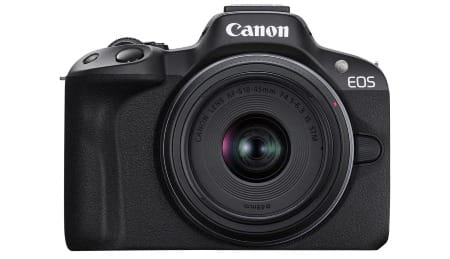
The R50 offers 24.2MP APS-C resolution, which delivers sharp, detailed images, and its small form factor makes it easy to carry around for long street photography sessions. The camera features Canon's highly regarded Dual Pixel CMOS AF system, which ensures fast, accurate autofocus tracking, even on moving subjects—a critical aspect for capturing dynamic street scenes.
The flip-out touchscreen makes it easy to shoot from different angles, including waist-level or overhead shots, giving street photographers more creative flexibility when composing their images. The EOS R50 also supports 4K video, making it a solid choice for those who want to shoot both stills and video.
Key Features
- 24.2MP APS-C Sensor: The Canon EOS R50’s 24.2-megapixel APS-C sensor delivers great image quality with sharp details, good color reproduction, and solid low-light performance. This sensor size offers a balance between image quality and camera portability, making it ideal for street photography where a compact setup is often preferred.
- Dual Pixel CMOS Autofocus (AF): Canon’s Dual Pixel CMOS AF system is a standout feature in the R50, offering smooth and fast autofocus performance. The autofocus covers a large area of the frame, making it easy to track moving subjects—essential for street photography, where people or objects can move unpredictably. With face and eye detection, the R50 locks onto human subjects accurately, ensuring sharp images even in chaotic environments.
- Compact and Lightweight Design: Weighing in at just around 375 grams (0.82 pounds), the R50 is one of the lightest mirrorless cameras in Canon’s lineup. Its small and lightweight design makes it perfect for street photographers who want to stay mobile and discreet. The compact size allows it to easily fit in a small bag or even a jacket pocket, so you can carry it around without hassle.
- Fully Articulating Touchscreen: The R50 features a 3.0-inch fully articulating touchscreen, which is ideal for street photographers who often shoot from unconventional angles. Whether you want to shoot from the hip or take overhead shots, the flip-out screen allows for more creative compositions without having to contort your body or rely solely on the viewfinder.
- RF Lens Mount: The Canon EOS R50 uses Canon’s RF lens mount, giving you access to a growing range of high-quality RF lenses. From compact primes to versatile zooms, this lens ecosystem allows you to adapt the camera to your preferred street photography style. For street photographers, Canon’s RF 35mm f/1.8 or RF 50mm f/1.8 lenses are excellent companions for this camera, offering a perfect balance of size and image quality.
- 4K Video Recording: In addition to still photography, the R50 also excels at video, offering 4K video recording at 30fps without cropping. This makes it a great option for street photographers who also want to capture video footage of urban environments. The R50’s autofocus system is just as reliable in video mode as it is for stills, ensuring that your footage remains sharp and focused.
- Simple and Intuitive Controls: The Canon EOS R50 is designed with simplicity in mind, making it especially appealing for beginner photographers or those transitioning from smartphone photography to a dedicated camera. The controls are intuitive and easy to navigate, ensuring that you can quickly adjust settings and focus on capturing the moment rather than getting lost in the camera’s menu.
- Wireless Connectivity: The R50 comes with built-in Wi-Fi and Bluetooth, allowing you to quickly transfer images to your smartphone for instant sharing or backup. This is particularly useful for street photographers who want to share their work on social media or back up their images on the go.
Pros & Cons
- Pros:
- Compact and Lightweight: Extremely portable, perfect for street photographers who want a camera they can carry all day without being weighed down.
- Excellent Autofocus: Dual Pixel CMOS AF with face and eye detection ensures sharp focus even with moving subjects.
- Great Image Quality: The 24.2MP APS-C sensor delivers sharp, detailed images with good dynamic range.
- Affordable: The R50 is priced attractively for entry-level photographers or those on a budget, making it accessible to a wide range of users.
- Fully Articulating Touchscreen: Adds creative flexibility for shooting from unconventional angles.
- 4K Video: High-quality video recording makes it a versatile camera for both photography and videography.
- RF Lens Mount: Access to Canon’s growing RF lens ecosystem means you can expand your kit as your photography skills develop.
- Wireless Connectivity: Wi-Fi and Bluetooth make sharing photos quick and easy.
- Cons:
- No In-Body Image Stabilization (IBIS): The R50 does not have built-in image stabilization, which means you’ll have to rely on lenses with optical stabilization or shoot at higher shutter speeds to avoid camera shake.
- Small Buffer for Burst Shooting: The R50 can shoot bursts at 12fps, but the buffer fills up quickly when shooting RAW images, which may limit its usefulness for capturing fast-moving street scenes.
- Limited Customization: While the R50 is easy to use, advanced photographers might find the customization options somewhat limited compared to more expensive models.
- Smaller Viewfinder: The electronic viewfinder (EVF) is functional but smaller and lower resolution than some other cameras in this class, which might not appeal to photographers who rely heavily on EVF use.
- No Weather Sealing: The R50 is not weather-sealed, which means you’ll need to be cautious when shooting in adverse conditions such as rain or dusty environments.
6. Nikon Z50
Why It’s Great for Street Photography
The Nikon Z50 is an excellent compact mirrorless camera designed with street photographers in mind, offering a great balance between performance, portability, and affordability. As part of Nikon’s Z-series, the Z50 leverages the benefits of the Z-mount system, allowing for access to a wide range of high-quality lenses, both native Z lenses and, via an adapter, Nikon’s extensive F-mount DSLR lenses. The camera features a 20.9MP APS-C sensor, which provides outstanding image quality in a lightweight, easy-to-carry body, making it perfect for street photography, where mobility and discretion are key.
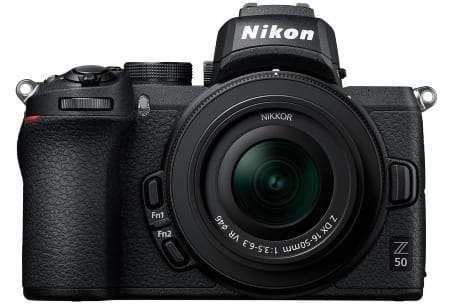
The Z50 also boasts Nikon’s advanced autofocus system, which includes 209 phase-detection AF points, ensuring fast and accurate focusing, even on moving subjects—crucial for capturing those split-second moments on the streets. The silent shooting mode and compact design make the Z50 a discreet choice, allowing you to blend into the background and shoot candidly without drawing attention to yourself.
With Wi-Fi and Bluetooth connectivity, you can easily transfer photos to your smartphone, enabling quick sharing on social media or backing up images on the go. The camera also supports 4K video recording, making it a versatile option for street photographers who want to capture both stills and video footage.
Key Features
- 20.9MP APS-C Sensor: The Nikon Z50 is equipped with a 20.9-megapixel APS-C (DX-format) sensor, which delivers high-quality images with excellent detail, sharpness, and dynamic range. While the sensor is smaller than full-frame, the APS-C format allows for a more compact design while still providing professional-level image quality. This makes the Z50 ideal for street photography, where both image quality and portability are important.
- Expeed 6 Image Processor: The camera is powered by Nikon’s Expeed 6 image processor, which enhances performance by providing faster image processing, better noise reduction in low-light situations, and smooth video recording. This fast processing speed is crucial for street photography, where quick reaction times and capturing fast-moving subjects are essential.
- 209-Point Hybrid Autofocus System: The Z50’s 209-point phase-detection autofocus system covers 90% of the frame both horizontally and vertically, ensuring fast and accurate autofocus, even on subjects moving through the scene. This is critical for street photographers who need to lock focus quickly in fast-paced environments. The camera also features eye-detection AF, which is especially useful for ensuring sharp focus on human subjects in candid portraits.
- Compact and Lightweight Design: The Z50 weighs just 395 grams (0.87 lbs) without a lens, making it one of the lightest mirrorless cameras in Nikon’s lineup. Its compact size means it’s easy to carry around all day without adding bulk, making it a perfect companion for street photographers who are constantly on the move. The camera’s ergonomic design also ensures a comfortable grip, even during extended shooting sessions.
- Electronic Viewfinder (EVF): The Z50 features a 2.36-million-dot electronic viewfinder (EVF), providing a clear, high-resolution view of your scene. The EVF is particularly helpful when shooting in bright sunlight or when you need to carefully frame your shots. It also provides real-time exposure previews, which ensures your images are correctly exposed before you press the shutter.
- 3.2-Inch Tilting Touchscreen: The rear display is a 3.2-inch touchscreen that tilts, giving you more flexibility in composing your shots from different angles. This is particularly useful for street photography, where shooting from waist-level or overhead angles can add a fresh perspective to your images. The touchscreen also allows for easy navigation through the menu and quick adjustment of settings on the fly.
- Silent Shooting Mode: Street photographers often need to remain as discreet as possible to capture candid moments without disturbing their subjects. The Z50’s silent electronic shutter mode allows you to shoot without any shutter noise, making it perfect for capturing images unnoticed in quiet environments or sensitive situations.
- 4K Video Recording: The Nikon Z50 offers 4K video recording at 30fps, making it an excellent option for street photographers who also want to capture video footage. The camera’s 4K capabilities, combined with its fast autofocus and image quality, make it a versatile tool for both photography and videography. The camera also supports slow-motion video at 120fps in Full HD, which can be useful for creative street video projects.
- Wi-Fi and Bluetooth Connectivity: The Z50 comes with built-in Wi-Fi and Bluetooth, allowing for quick and easy image transfers to your smartphone or tablet via Nikon’s SnapBridge app. This feature is ideal for street photographers who want to share their work on social media or back up their images without having to wait until they’re back at their computer.
- Native Z-Mount Lenses: One of the key benefits of the Z50 is its compatibility with Nikon’s Z-mount lenses, known for their sharpness and optical performance. While the Z50 is an APS-C camera, it can use both DX-format and full-frame (FX-format) Z lenses, giving you access to a wide range of high-quality optics. This versatility allows street photographers to choose the best lens for their style, whether they prefer a wide-angle lens for environmental shots or a prime lens for more intimate portraits.
Pros & Cons
- Pros:
- Lightweight and Compact: Ideal for street photography, the Z50 is easy to carry all day without feeling weighed down.
- Fast and Accurate Autofocus: The 209-point AF system ensures quick focus acquisition, even on moving subjects, which is crucial for street photography.
- Silent Shutter: Allows you to capture candid moments discreetly without the noise of a mechanical shutter.
- Excellent Image Quality: The 20.9MP APS-C sensor delivers sharp, detailed images with good low-light performance.
- Tilting Touchscreen: Adds flexibility for composing shots from unconventional angles, perfect for creative street compositions.
- 4K Video: High-quality video recording capabilities make the Z50 a versatile tool for capturing both stills and video footage.
- Affordable: Priced lower than full-frame mirrorless cameras, the Z50 offers a cost-effective option for photographers who want to enter the mirrorless world without breaking the bank.
- Cons:
- No In-Body Image Stabilization (IBIS): Unlike some of Nikon’s higher-end mirrorless cameras, the Z50 lacks in-body stabilization, meaning you’ll need to rely on lenses with optical stabilization to reduce camera shake.
- Limited Battery Life: The battery life is decent but not exceptional, so carrying a spare battery is recommended for long street photography sessions.
- Smaller Lens Selection for DX Format: While the Z50 is compatible with full-frame Z lenses, the native DX-format lens lineup is still relatively limited compared to other systems.
- Single SD Card Slot: The Z50 has only one SD card slot, which could be a limitation for professionals who want the security of dual card slots for backups during important shoots.
7. Olympus OM-D E-M10 Mark IV
Why It’s Great for Street Photography
The Olympus OM-D E-M10 Mark IV is a compact, lightweight Micro Four Thirds mirrorless camera that delivers a great mix of portability, image quality, and affordability, making it an excellent choice for street photography. Its retro-inspired design gives it a stylish, discreet look, and its size makes it incredibly easy to carry all day, perfect for street photographers who need to remain agile and unnoticed while shooting.
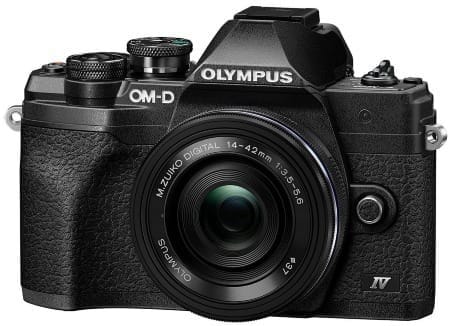
Despite its small size, the OM-D E-M10 Mark IV is packed with features, including a 20.3MP Live MOS sensor, in-body image stabilization (IBIS), and a tilting touchscreen, all of which make it versatile for capturing spontaneous moments on the street. The 5-axis IBIS is particularly useful for handheld shooting, which is essential for street photographers who often need to shoot without tripods. It also allows for sharp images even in low-light conditions or when using slower shutter speeds.
The camera’s burst shooting capabilities and fast autofocus system ensure you won’t miss a moment when subjects are moving quickly through the frame, and the silent shutter mode is ideal for shooting in quieter environments or when you want to remain inconspicuous. Additionally, the flip-down touchscreen makes it easy to capture shots from creative angles, giving you the flexibility to shoot from the hip or overhead without drawing attention to yourself.
Key Features
- 20.3MP Micro Four Thirds Sensor: The OM-D E-M10 Mark IV features a 20.3-megapixel Live MOS Micro Four Thirds sensor, which delivers excellent image quality in a compact body. While the sensor is smaller than APS-C or full-frame sensors, it offers a great balance between portability and image quality. This sensor size allows for sharp, detailed images with good dynamic range, making it well-suited for street photography, where capturing both the subject and environmental context is key.
- 5-Axis In-Body Image Stabilization (IBIS): One of the standout features of the E-M10 Mark IV is its 5-axis in-body image stabilization, which compensates for camera shake and allows for sharper images, especially in low-light conditions or when shooting handheld. The IBIS is particularly useful for street photographers who often shoot on the move and need to rely on slower shutter speeds without the risk of blurry images.
- Compact and Lightweight Design: The E-M10 Mark IV is extremely portable, weighing just 383 grams (0.84 lbs), making it one of the lightest mirrorless cameras with IBIS. Its compact size makes it perfect for street photographers who need to carry their gear all day without being weighed down. The camera’s design also includes a deep grip, making it comfortable to hold and shoot for extended periods, even with one hand.
- Tilting 3.0-Inch Touchscreen: The camera has a tilting 3.0-inch touchscreen that flips down, making it easy to capture shots from low angles or take selfies. For street photography, this feature is particularly useful for shooting from unconventional angles, such as waist level or overhead, without needing to look through the viewfinder. This makes it easier to be discreet and capture candid moments.
- Fast Autofocus with Face and Eye Detection: The OM-D E-M10 Mark IV is equipped with 121-point contrast-detection autofocus and includes Face and Eye Detection AF, which helps ensure sharp focus on human subjects. This is especially useful for street photographers who often capture candid portraits or fast-moving subjects. The autofocus system is quick and responsive, making it ideal for the fast-paced nature of street photography.
- Silent Shutter Mode: The silent electronic shutter is a key feature for street photographers who want to remain discreet while shooting. The absence of a shutter sound allows you to capture images without drawing attention to yourself, which is essential for candid photography in public spaces.
- 4K Video Recording: In addition to its still photography capabilities, the OM-D E-M10 Mark IV also offers 4K video recording at 30fps. This makes it a versatile tool for street photographers who also want to capture video footage of urban environments. The camera’s small size and IBIS make it easy to shoot handheld video while moving through the streets.
- Art Filters and Creative Shooting Modes: Olympus is known for its Art Filters and creative shooting modes, which allow photographers to add unique effects and styles to their images in-camera. For street photographers who want to experiment with different looks or create stylized images without post-processing, these filters can add a creative flair to your work.
- Built-In Wi-Fi and Bluetooth: The camera features Wi-Fi and Bluetooth connectivity, allowing you to quickly transfer images to your smartphone for immediate sharing on social media or backing up your photos. This is particularly useful for street photographers who want to share their images while on the go.
Pros & Cons
- Pros:
- Lightweight and Portable: The E-M10 Mark IV’s small size and light weight make it an ideal camera for street photographers who need to stay agile and move quickly through urban environments.
- 5-Axis In-Body Stabilization: The IBIS system helps reduce camera shake and allows for sharper images, especially in low light or when shooting handheld.
- Tilting Touchscreen: The tilting screen provides flexibility for shooting from unconventional angles, allowing for more creativity and discretion in street photography.
- Fast Autofocus with Eye Detection: The autofocus system is quick and reliable, ensuring sharp focus on human subjects, even when they’re in motion.
- Silent Shutter Mode: Perfect for shooting candidly without alerting your subjects or drawing attention to yourself.
- 4K Video: High-quality video recording adds versatility for street photographers who also want to capture video footage in addition to still images.
- Creative Art Filters: In-camera filters allow for fun and experimental photography, ideal for photographers who want to add some creative flair to their street images without needing post-processing.
- Affordable Price: The OM-D E-M10 Mark IV offers a great set of features at a relatively affordable price, making it accessible for enthusiasts or beginners.
- Cons:
- Micro Four Thirds Sensor: While the MFT sensor offers excellent portability, it doesn’t provide the same level of dynamic range or low-light performance as APS-C or full-frame sensors.
- No Weather Sealing: The camera is not weather-sealed, which means you’ll need to be careful when shooting in adverse conditions such as rain or dust.
- No Mic Input for Video: While the E-M10 Mark IV has decent video capabilities, it lacks a microphone input, limiting its use for higher-quality audio in video recordings.
- Contrast-Detection Autofocus: While the autofocus is fast, it uses contrast-detection rather than phase-detection, which may not be as quick or accurate in certain situations compared to other systems with phase-detection AF.
8. iPhone 15 Pro
Why It’s Great for Street Photography
The iPhone 15 Pro is one of the best smartphones for street photography, thanks to its powerful camera system, intuitive controls, and unmatched portability. While it may not be a traditional camera, the iPhone 15 Pro offers features that make it a formidable tool for street photographers who prioritize convenience, quick deployment, and the ability to shoot discreetly without carrying bulky gear.
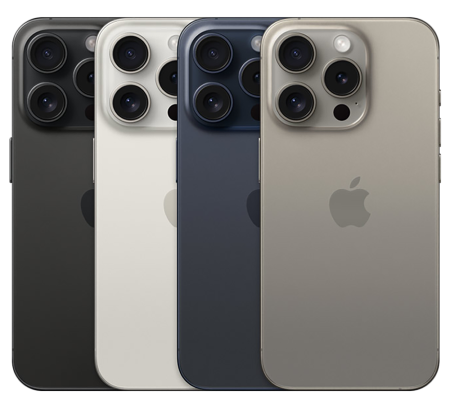
The iPhone 15 Pro features a triple-lens camera setup, including a 48MP main sensor, a 12MP ultra-wide lens, and a 12MP telephoto lens, offering a versatile range of focal lengths. This flexibility makes it easy to switch between different perspectives, whether you’re capturing a wide urban scene, close-up details, or candid street portraits from a distance. The computational photography capabilities are where the iPhone shines, utilizing advanced algorithms to produce stunning results even in challenging lighting conditions. Features like Smart HDR 5, Deep Fusion, and Night Mode ensure your images are sharp, detailed, and beautifully exposed.
One of the biggest advantages of using the iPhone 15 Pro for street photography is its compact size and discreet appearance. People rarely pay attention to someone holding a smartphone, making it much easier to capture candid moments without drawing attention. The iPhone 15 Pro’s fast and responsive shooting also means you can quickly snap shots in fast-paced environments, while the ProRAW format provides greater flexibility for post-processing, similar to a traditional DSLR or mirrorless camera.
Additionally, the 4K video recording capabilities and Cinematic Mode allow street photographers to capture high-quality video footage, adding another dimension to documenting life on the streets.
Key Features
- 48MP Main Camera Sensor: The iPhone 15 Pro is equipped with a 48MP main sensor, which is significantly larger and more powerful than the sensors found in previous iPhone models. This sensor allows for high-resolution images that capture incredible detail, making it perfect for street photography, where fine details can make a big difference. The increased resolution also enables more flexibility for cropping in post-processing without losing image quality.
- Triple-Lens Setup: The iPhone 15 Pro has a versatile triple-lens system:
- 48MP Wide Lens (Main) – This lens is ideal for capturing general street scenes, with a versatile 24mm focal length (35mm equivalent).
- 12MP Ultra-Wide Lens – The ultra-wide lens (13mm equivalent) is perfect for capturing expansive street scenes, architecture, or crowded marketplaces.
- 12MP Telephoto Lens – The telephoto lens (77mm equivalent) allows you to zoom in for street portraits or isolate subjects from a distance, providing a more intimate perspective.
This range of lenses allows street photographers to cover a variety of shooting scenarios without needing to switch lenses, making it a highly versatile tool.
- ProRAW and ProRes Formats: The inclusion of ProRAW and ProRes formats provides professional-grade image and video quality. ProRAW gives photographers greater control over exposure, color, and dynamic range in post-processing, similar to shooting in RAW on a DSLR or mirrorless camera. This is ideal for street photographers who want the flexibility to fine-tune their images later. ProRes, on the other hand, is a high-quality video format that ensures detailed and professional-looking footage.
- Night Mode and Smart HDR 5: The iPhone 15 Pro’s Night Mode and Smart HDR 5 are standout features for street photographers who shoot in low-light or high-contrast conditions. Night Mode uses computational photography to enhance details and reduce noise in low-light scenes, making it perfect for capturing atmospheric street scenes after dark. Smart HDR 5 intelligently adjusts the dynamic range, ensuring balanced exposures even in challenging lighting situations.
- Cinematic Mode and Action Mode: Cinematic Mode allows you to capture 4K video at 24fps with beautiful depth-of-field effects, mimicking the look of high-end cinema cameras. This feature is perfect for street photographers who want to create compelling street videos with a cinematic feel. Action Mode, on the other hand, provides superior stabilization, making it ideal for shooting handheld video while walking or moving quickly through crowded streets.
- Advanced Computational Photography: The iPhone 15 Pro leverages computational photography techniques like Deep Fusion, which analyzes multiple exposures to optimize textures and details in your images, and Photonic Engine, which improves color and sharpness in low-light scenes. These features work together to produce stunning images that rival those of many dedicated cameras.
- Macro Photography Capabilities: The ultra-wide lens also supports macro photography, allowing you to capture extreme close-ups of small details in the environment—such as textures, signage, or tiny street elements that might go unnoticed otherwise. This versatility is a great addition for street photographers who want to experiment with different styles and capture unique perspectives.
- Discreet and Always Ready: One of the greatest strengths of using the iPhone for street photography is that it’s always with you and instantly ready to shoot. You don’t have to fumble with camera settings or lenses; you can quickly launch the camera app and start shooting in seconds. Its silent operation and ability to blend into everyday scenarios make it perfect for capturing candid moments without alerting your subjects.
- 4K Video with Cinematic Effects: The iPhone 15 Pro supports 4K video recording at up to 60fps, making it an excellent choice for photographers who also want to shoot video. The Cinematic Mode allows you to add depth-of-field effects, mimicking the focus transitions seen in professional cinema. This feature is ideal for capturing street videos with a narrative feel, where focus changes can guide the viewer’s attention.
- Fast Connectivity and Editing: The iPhone 15 Pro supports 5G connectivity and AirDrop, enabling instant sharing of your images and videos. You can also edit photos directly on the device using apps like Lightroom Mobile, making it easy to refine and share your street photography on the go.
Pros & Cons
- Pros:
- Always Ready to Shoot: The iPhone 15 Pro is highly portable and always at hand, making it ideal for spontaneous street photography.
- Versatile Triple-Lens System: The main, ultra-wide, and telephoto lenses cover a broad range of perspectives, making it versatile for different street photography styles.
- 48MP Main Sensor: High-resolution sensor provides excellent detail, sharpness, and flexibility for cropping.
- ProRAW and ProRes Support: Professional-grade formats allow for greater control in post-processing, enhancing the creative potential of your images and videos.
- Advanced Computational Photography: Features like Night Mode, Smart HDR, and Deep Fusion produce stunning images even in challenging conditions.
- Discreet and Non-Intrusive: Smartphones are less conspicuous than traditional cameras, allowing for candid shooting in public spaces.
- Macro Photography and Video: The ability to capture extreme close-ups adds creative flexibility.
- 4K Video with Cinematic Effects: High-quality video with focus control and stabilization features.
- Cons:
- Limited Depth of Field Control: Despite computational photography tricks, the iPhone can’t replicate the shallow depth of field that larger-sensor cameras can achieve with fast lenses.
- No Physical Controls: For photographers who prefer tactile feedback, the lack of physical dials and buttons can make adjusting settings less intuitive compared to traditional cameras.
- Battery Life: Intensive use of the camera, especially with 4K video and computational features, can drain the battery quickly, limiting shooting time.
- Fixed Apertures: The lenses have fixed apertures, limiting creative control over depth of field.
- No Manual Zoom Lens: While the iPhone 15 Pro has a telephoto lens, it doesn’t have the flexibility of a true manual zoom lens found on traditional cameras.
- Image Quality in Extreme Conditions: While excellent for a smartphone, the iPhone’s image quality in very low light or high-contrast scenes may not match that of larger-sensor cameras.
Recap of the Top Cameras
Street photography is a unique and dynamic genre that requires a camera capable of being fast, discreet, and reliable in a variety of environments. In this guide, we explored ten of the best cameras for street photography in 2024, ranging from compact mirrorless systems and fixed-lens cameras to versatile smartphones, all designed to meet the specific needs of street photographers. Here's a brief recap:
- Fujifilm X100V: A compact, stylish camera with a fixed 23mm lens and hybrid viewfinder, perfect for those who value simplicity and classic aesthetics.
- Ricoh GR III: Known for its ultra-portable size, the GR III is a minimalistic powerhouse with a fixed 28mm lens, making it ideal for those who prioritize portability.
- Sony A7C: A full-frame mirrorless camera in a compact body, offering versatility and image quality for street photographers who want more flexibility with lenses.
- Leica Q2: The epitome of luxury and performance, the Q2 delivers stunning image quality with a fixed 28mm f/1.7 lens, wrapped in a durable, weather-sealed body.
- Canon EOS R50: An affordable mirrorless camera with excellent autofocus, lightweight design, and the flexibility of Canon's RF lens system.
- Nikon Z50: A compact mirrorless APS-C camera with fast autofocus and great image quality, ideal for street photographers who want a reliable yet affordable option.
- Olympus OM-D E-M10 Mark IV: Lightweight and packed with features like 5-axis image stabilization and a tilting screen, this camera offers great value for street photographers.
- iPhone 15 Pro: A smartphone with cutting-edge computational photography features, making it a highly capable and portable street photography tool.
Final Thoughts: Choosing the Right Camera for Your Style
Choosing the right camera for street photography ultimately depends on your personal shooting style, needs, and budget. Here are a few considerations to keep in mind when selecting the best camera for your street photography journey:
- Portability: For those who prioritize a camera that’s easy to carry around all day, the Ricoh GR III, iPhone 15 Pro, or Olympus OM-D E-M10 Mark IV might be the best choices, thanks to their lightweight and compact designs.
- Discretion: If your goal is to capture candid moments without drawing attention, cameras like the Fujifilm X100V, Leica Q2 offer a stealthy and unobtrusive presence, with features like silent shooting and compact, retro-style designs that blend in with everyday environments.
- Image Quality: For photographers who demand the highest image quality, the Sony A7C and Leica Q2 provide full-frame sensors that excel in low-light conditions and produce stunning detail and color depth. If you need a versatile camera with excellent video capabilities, these options also stand out.
- Lens Flexibility: If you prefer the ability to swap lenses depending on the scene, consider cameras like the Canon EOS R50, Nikon Z50, or Sony A7C, which offer access to broad lens ecosystems, allowing you to shoot wide angles or tight street portraits with ease.
- Budget: For photographers on a budget, the Canon EOS R50, and Olympus OM-D E-M10 Mark IV offer excellent value without sacrificing essential features like autofocus speed, image quality, and portability.
- Hybrid Shooting: If you’re a street photographer who likes to shoot both stills and video, the iPhone 15 Pro, Sony A7C are strong contenders, offering 4K video, excellent autofocus in video mode, and features like Cinematic Mode or 4K Photo for more creative control.
Final Recommendations
No matter which camera you choose, remember that street photography is all about capturing those fleeting, spontaneous moments that tell a story. The right camera for you should not only fit your technical needs but also match your personal style and comfort level while shooting in busy, unpredictable environments.
For purists who want a no-nonsense camera that prioritizes the shooting experience, the Leica Q2 might be your best companion. For everyday street explorers who need an easy-to-carry option, the Ricoh GR III or iPhone 15 Pro are great choices, with a balance of performance and portability.
Ultimately, the best camera for street photography is the one you can rely on to get the shot—whether that’s capturing a quiet moment in a crowded market or framing an expressive portrait on a busy street corner.

